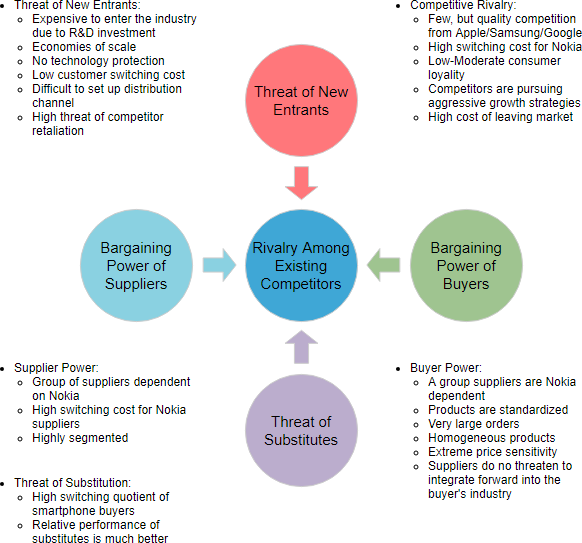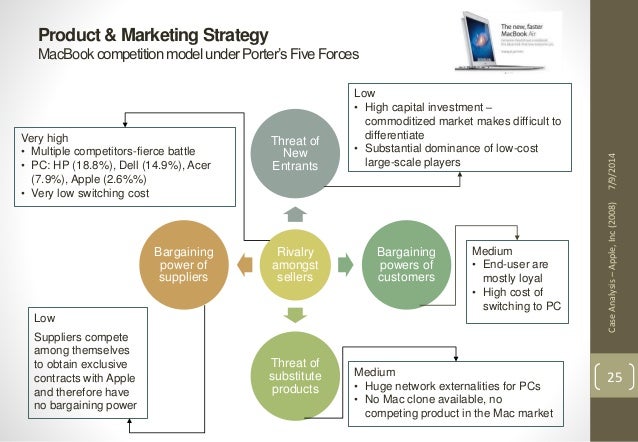External Remote Environment Analysis
PORTERS FIVE FORCES - IPHONE. PESTEL ANALYSIS. BOSTON I PORTFOLIO. The story of Apple Inc. Started in 1976 and is a quite successful one. The chief character Steve Jobs just recently resigned as Managing Director of this multinational company. Thus, the rating shows that there is a low, moderate and high impact of the five forces on the Apple Inc, in particular, low impact from the position of the competitive rivalry, substitute power, and the power of new entrants along with the moderate impact from the position of the buyer power along with the supplier power, which has the high impact from the position of the five forces. Report contains the application of the major analytical strategic frameworks in business studies such as SWOT, PESTEL, Porter’s Five Forces, Value Chain analysis, Ansoff Matrix and McKinsey 7S Model on Apple. Moreover, the report contains analyses of Apple’s business strategy, leadership and organizational structure and ecosystem. Five Forces Model Competitive Force 1: Rivalry among Existing Firms The two main areas within the computer hardware industry in which apple competes are the personal computer and portable music markets. The personal computer market is fairly well developed and growth in this market will be moderate.
Five Forces Analysis Apple Inc. User

Five Forces Analysis Apple Inc. Free
General Forces and Porter’s Five Forces analysis is a tool designed to help evaluate competitive forces and the business strategy suitable for a firm in an industry it operates (Porter, 2008). If the forces in the industry operate wholesomely then it means that the industry is not attractive. The industry becomes more vulnerable if the level of competition is higher. The paper therefore uses Porters five forces to evaluate the industry Apple Inc., operates and not the firm itself. Therefore, on that premise, the assessment as well will apply to other firms in this industry such as IBM, Nokia and others.
Computer and Smartphone manufacturing has become a key sector as the world adapt to new forms of technology. The players therefore, must define their business before there analyze them using the porters five forces (Harvard Business School Press, 2005). The threats and forces in this market will not be similar to those in other markets outside such as Japan and China. The five forces has horizontal and vertical forces that affect and industry and therefore require analysis. Horizontal forces include threat of new entrants, competition in the same industry, and threat of established rivals and substitute products. On the other hand, vertical forces are those that originate from supply-chain or the vertical competition and include bargaining power of suppliers and bargaining power of customers. In summary using General Forces and Porter’s Five Forces analysis, it can be concluded that; the industry has low threats on new entrants, bargaining power of the customers/buyers is low, there is a threat of substitute products, suppliers have much bargaining powers and there is a significant level of rivalry among competitors. Based on this analysis, the industry is open to greater opportunities in future. The fact that the threat to new entrant is low; the company can use this opportunity to increase its sales in future. Bargaining power of buyers is low and therefore, the industry can have an upper hand hence will continue to reap handsomely. Threat to substitutes exists as different companies have products that offer alternative products. The bargaining power of suppliers is high and this is likely to increase the costs of supplies. The level of rivalry is significant hence, the industry is expected to adapt to appropriate strategies to reach to the customers and win over them. As discussed, these trends and forecasts have ramifications on the industry. To ensure that the industry remains competitive, the firms must continue to invest in quality and increase marketing. The industry as well may face an increase number of new entrants if the industry is perceived to be profitable.
Based on Porter’s five analysis, a number of factors may impact on the Apple Inc., profitability. One of the external forces that may affect profitability of the industry is the increased level of competition and rivalry. This will push the company profitability low as the firm adopts strategies to attract more customers. Higher level of bargaining power of suppliers will also reduce profitability on the industry (Narayanan & Fahey, 2005). Other forces include higher bargaining power, and increased number of substitutes. Other forces may include, stiff government regulations among others. Potential opportunities created by the five forces include increased number of customers through increased advertising. The industry is open to opportunity as the market share is yet to be exploited as is low. Threats includes, increase threats of new investors due to the perception that it is profitable. General Forces Analysis and Porter’s Five Forces analyses is used to developing organizational strategy because it provides vital information about the industry. Through this analysis, a firm like Apple gets insights on the industry at large hence can adopt suitable strategies to enable it gain a competitive edge (Apple Case Study, 2012).

Five Forces Analysis Apple Inc. Price
The opportunities of these tools include, it is easy to use, and it provides insights about the industry and allows a firm to understand the competiveness of the industry. The limitations of the tool are that it may not provide accurate result because firms in an industry may vary due to circumstances. The tool requires good analysis and it may take considerable time to understand the industry as a whole because of the size. Therefore, this analysis is important and has implication for practice. Apple Inc., can use this information to understand the industry and adopt suitable strategies that can enable it achieve its goals. In such industry, it is expected that the company remains creative and innovative to remain competitive. The two questions that should be considered in this analysis are; does the size of the industry affect analysis using Porters Five forces? How can a firm use the tool to change its weakness into strengths?
References
Apple Case Study (2012). Apple Inc.: The Steve Jobs Effect. The Steve Jobs Effect, 1-16

Apple Inc. Five Forces Analysis (porter’s Model)

Harvard Business School Press. (2005). Strategy: Create and implement the best strategy for your business. Boston, MA: Author.
Narayanan, V., & Fahey, L. (2005). The Relevance of the Institutional Underpinnings of Porter’s Five Forces Framework to Emerging Economies: An Epistemological Analysis. Journal of Management Studies, 42(1): 207-223.
Porter, M. E. (2008). The five competitive forces that shape strategy. Harvard Business Review, 86(1), 78–93.
Related Posts:
